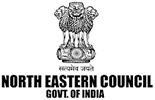Knowledge Hub
Labelling and Certification Schemes for Indigenous Peoples' foods Generating Income while Protecting and Promoting Indigenous Peoplesā values
2022
Author(s): Food and Agriculture Organization, Alliance of Bioversity International and CIAT
The review includes recommendations for various actors to support Indigenous Peoples in their self-determined economic development and towards the sustainable marketization of their products. The review also provides guidelines for Indigenous Peoples willing to engage in such initiatve. Those are applicable to different contexts on the ground, and include good practices, and measures to mitigate risks.

Training Manual for Indigeneous People and Local Communities on The Convention on Biological Diversity
2022
Author(s): The Secretariat of the Convention on Biological Diversity
The IPBES Global Assessment Report on Biodiversity and Ecosystem Services emphasizes that āAt least a quarter of the global land area is traditionally owned, managed, used or occupied by indigenous peoples. These areas include approximately 35 per cent of the area that is formally protected and approximately 35 per cent of all remaining terrestrial areas with very low interventionā.

Using Traditional and Indigeneous Knowledge for Disaster Risk Reduction
2022
Author(s): United Nations Office for Disaster Risk Reduction (UNDRR)
Traditional and indigenous knowledges offer a lens through which we can understand risk reduction and engagement better, enrich resilience building efforts and develop empowering solutions. Many sources of traditional knowledge are based on cognitive schemes that favour careful and integrative observation and adaptive learning over generations; this often goes hand in hand with a more holistic and ecologically viable approach, leading towards sustainable, democratic and inclusive DRR, response and recovery.
Arctic knowledge Echoes from the North : Conversations with Arctic Indigenous People and Others Concerned
2021
Author(s): Manrique RD, Pereira GA, Zoghbi J
The report describes ongoing impacts on Arctic livelihoods through the voices of Arctic residents. It represents a contribution to a broader call for mobilising all relevant knowledge about Arctic environmental change and resilience, which impact not only Arctic inhabitants but also all populations on the planet.Furthermore, the report explores the interplay of traditional knowledge with scientific research practices, highlighting the key essential conditions found in successful cases of collaboration between traditional knowledge-holders and scientists.

We train farmers how they can be self-reliant, how to keep the environment healthy, and how our body will be healthy by eating traditional varieties, how to grow crops organically, free from chemicals.

Regenerative Agriculture supports Integrated Farm Management
2021
Author(s): LEAF (Linking Environment And Farming)
IFM is a site-specific, whole farm approach that blends the best of modern technology and traditional methods, providing a framework to support farmers with continuous improvement.

Irrigate like itās 2000 BC with easy DIY terracotta watering pots called Ollas.
2020
Author(s): Gardening Australia
This technique is great in dry, hot climate ā thereās no water wastage through run-off and evaporation, the water goes exactly where itās needed, and the risk of fungal issues on foliage is significantly reduced due to the foliage not being wet during a watering. The burying of the olla in the soil also promotes deeper roots systems that are better able to manage fluctuations in heat.
Upgrading Traditional Techniques Boosts Production of Famous Azerbaijani Tomatoes: Farmers Have Joined Together to Update Time-Honoured Practices and Increase Yields
2023
Author(s): Food and Agriculture Organization of the United Nations (FAO)
Sayad village is one of the most ancient settlements nestled on the Caspian Sea coast of Azerbaijanās Khachmaz district. Itās long been famous for its numerous varieties of succulent tomatoes thanks to the farmersā careful cultivation of the crop and the sunny climate.

Food Security and Indigenous Peoples.
2015
Author(s): Aisa Indigenous Peoples Pact (AIPP)
Commercial farming, national boundaries and āmodern lifeā is compromising and taking away their last remaining link to the earthāthe very source of their distinct indigenous identities, culture and dignity. Food security is becoming a serious problem as indigenous peoples are coerced into becoming employees of the international food industry.
Managing Agrobiodiversity in Successful Smallholder Landscapes in Ecuador. Producer organisation: Union of Peasant and Indigenous Organizations of Cotacachi (UNORCAC)
2023
Author(s): Cajas MAP
This study describes the actions of the Union of Peasant and Indigenous Organizations of Cotacachi (UNORCAC) in the conservation of agrobiodiversity in the forest and agricultural landscapes of the Cotacachi canton in Ecuador. These Indigenous systems stand out for their high biodiversity and for the agroecological approaches and traditional knowledge used.



